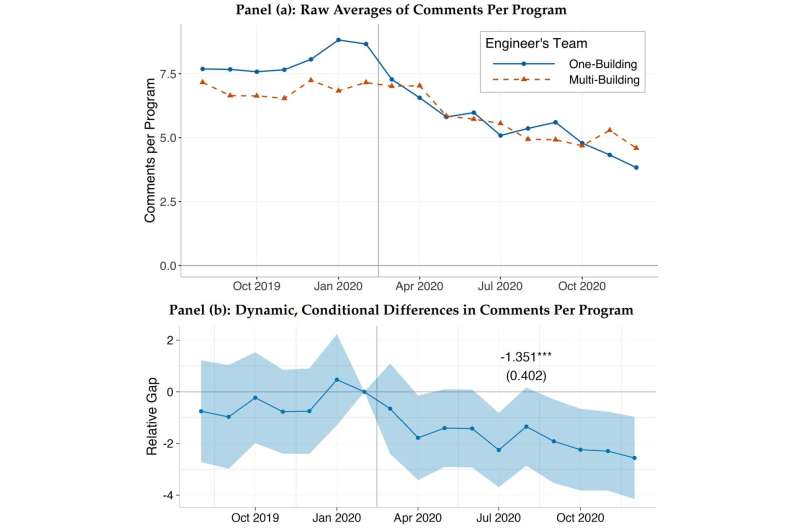This article has been reviewed according to Science X's editorial process and policies. Editors have highlighted the following attributes while ensuring the content's credibility:
fact-checked
proofread
Work from home creates particular challenges for young employees, especially women, study suggests

The COVID public health emergency is over, but work from home definitely isn't: Forty-one percent of U.S. employees who can work remotely choose to do so at least part of the week.
The response among executives has been mixed, with many claiming that less time in the office means less collaboration, weaker ties with colleagues, and fewer learning opportunities. It's an argument not without merit, a new study suggests.
According to "The Power of Proximity to Coworkers," a paper co-written by the Harvard economist Amanda Pallais, beneficial teamwork and important collaborations take a hit when employees work from home. Moreover, younger employees, particularly women, may be hurt most by remote work.
"We see that young workers learn more when they are working near their co-workers," said Pallais, who conducted the research with Natalia Emanuel of the Federal Reserve Bank of New York and Emma Harrington of the University of Iowa. "In our data, this leads to more promotions, pay raises, and top evaluations in the long run."
In Pallais' study, which focused on a group of software engineers at a Fortune 500 company, engineers working in the same building as all their teammates received a whopping 23 percent more online feedback on their codes than engineers with distant teammates. Young women were especially more likely to ask follow-up questions when working in person, "zeroing in on pain points in their programming." In remote scenarios, that back-and-forth dynamic vanished.

Without this kind of feedback, younger employees were more likely to quit, the researchers found. Their paper notes that going remote made engineers under 30 five times more likely to quit than when working in the same building as their coworkers pre-pandemic, and female engineers four times more likely to quit.
This problem, Pallais said, may be worse for those starting out in the job market now.
"The coders we study all started work before the pandemic, so they were able to form relationships in person before the offices closed," she said. "It may be even harder for workers who started jobs during the pandemic to collaborate with their teammates and ask their teammates for help."
But the paper also identifies a tradeoff. For senior engineers, onsite work reduced coding output by 21 percent, possibly because more of their time was devoted to giving feedback to younger colleagues. As with junior employees, women saw the greatest effect.
"Senior women give a lot more feedback to their younger colleagues when seated nearby, and they see a higher cost than men in terms of their own productivity," Pallais said.
In other words, tension exists between short-term productivity and the long-run development of younger employees, suggesting a hybrid model might be best.
"If workers are coming into the office three days a week, young workers will be able to learn more if they are coming in on the same days as their coworkers than if they aren't in the office at the same time," Pallais said.
More information: Paper: nataliaemanuel.github.io/ne_we … wer_of_Proximity.pdf
Provided by Harvard Gazette
This story is published courtesy of the Harvard Gazette, Harvard University's official newspaper. For additional university news, visit Harvard.edu.




















